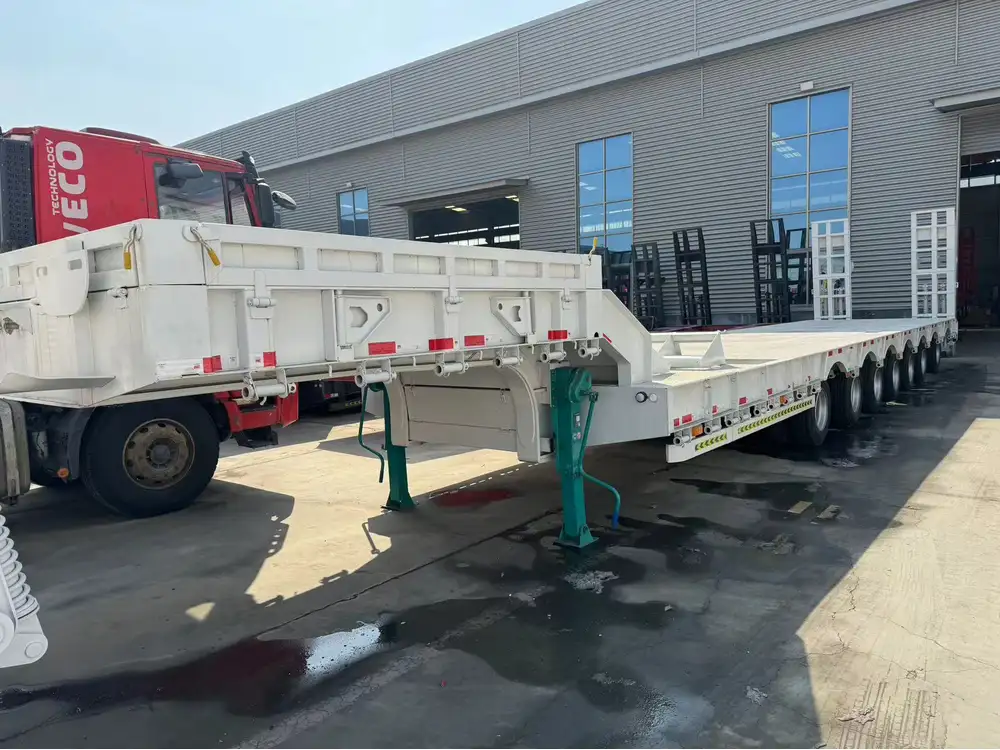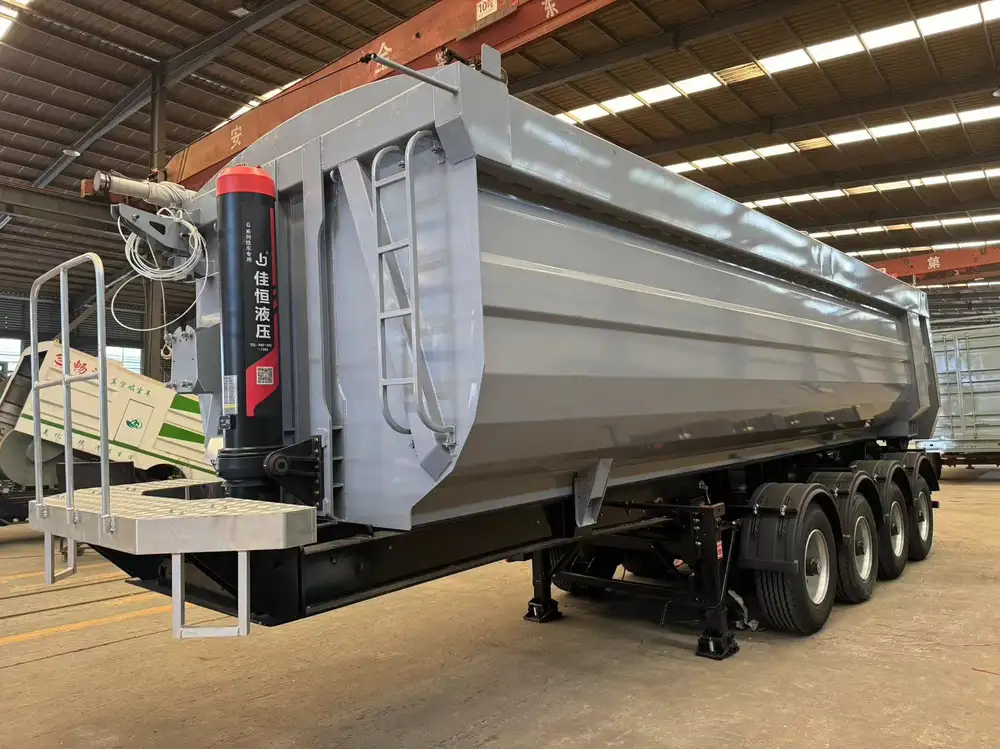Dumping a utility trailer properly not only ensures safety but also maximizes efficiency and minimizes the mess associated with debris removal. Whether you’re preparing to transport construction materials, landscaping debris, or waste, understanding the correct procedures and techniques to unload your trailer is essential. This comprehensive guide will walk you through every necessary step and provide valuable insights that ensure you maximize your utility trailer’s utility while minimizing potential mishaps.
Understanding Your Utility Trailer
Different Types of Utility Trailers
Before diving into the unloading process, it’s crucial to understand the different designs of utility trailers available:
| Type of Utility Trailer | Description | Common Uses |
|---|---|---|
| Flatbed Trailers | Open platforms with no sides | Transporting large items like lumber |
| Enclosed Trailers | Fully enclosed with side doors | Transporting tools, equipment, etc. |
| Dump Trailers | Equipped with hydraulic systems for dumping | Hauling dirt, debris, and waste |
| Tilt Trailers | Floor tilts to allow easy loading | Moving heavy machinery or vehicles |

Key Features to Consider
When selecting a utility trailer, consider these essential features:
- Weight Capacity: Ensure the trailer can handle the load you plan to dump.
- Size: Choose a size that suits your hauling and dumping needs.
- Material: Steel trailers offer durability, while aluminum is lightweight.
- Brakes: Vital for safety, especially for larger loads.
Preparing for the Dump Process
Safety First
Safety should always be your top priority when dumping a utility trailer. Start by reviewing a checklist of necessary safety precautions:
- Wear Protective Gear: Use gloves, steel-toed boots, and safety glasses.
- Inspect Your Trailer: Look for signs of wear or damage before use.
- Clear the Area: Ensure that the dumping site is free of obstacles and people.

Loading the Trailer: Best Practices
Before unloading, ensure that the load was placed correctly:
- Even Distribution: Load materials evenly to maintain stability.
- Secure the Load: Use straps or nets to prevent shifting during transport.
- Know the Weight: Be mindful not to exceed the trailer’s weight capacity.
Steps to Dump a Utility Trailer
Unloading your utility trailer requires a systematic approach. Here are the steps to follow:
Step 1: Choose the Right Location
Select an appropriate site for dumping. Factors to consider include:
- Accessibility: Ensure vehicles can maneuver easily.
- Surface Conditions: Level, solid ground is essential to prevent sinking or sliding.
- Legal Restrictions: Check any local laws regarding dumping waste or materials.

Step 2: Position the Trailer
Align your utility trailer for optimal dumping:
- Brake Engagement: Ensure the trailer is securely parked and the brakes are on.
- Level Ground: If possible, keep the trailer on a slight incline to assist with dumping.
Step 3: Engage the Dumping Mechanism
Depending on your trailer’s type, engage the dumping mechanism:
For Hydraulic Dump Trailers:
- Locate the hydraulic lever.
- Slowly raise the trailer bed, monitoring for stability.
For Tilt Trailers:
- Release the tilt mechanism.
- Gently guide the load as the trailer bed tilts back.
Step 4: Monitor the Dumping Process
As the materials start to dump, keep watch. If materials don’t flow freely, consider the following:
- Avoid Overloading: Heavy materials may clump together.
- Adjust Trailer Position: Sometimes shifting the angle can assist with more efficient dumping.

Step 5: Clear the Area Post-Dumping
Once the unloading is complete, take these steps to ensure safety and efficiency:
- Inspect the Site: Ensure no debris is left that could be a hazard.
- Re-secure the Trailer: Ensure that the trailer is locked and safe.
- Retrieve Loose Items: Collect straps, tools, or anything else used during the process.
Common Issues and Solutions
Understanding potential issues can help prevent complications:
Issue 1: Load Blockage
Symptoms: Materials refuse to come out, creating a jam.
Solutions:
- Manual Assistance: Use a shovel or rake to loosen the materials.
- Dumping Angle: Adjust the angle of the trailer slightly to encourage flow.

Issue 2: Overloaded Trailer
Symptoms: Difficulty lifting, excessive strain on the truck.
Solutions:
- Manual Unloading: If safe, unload some material manually first.
- Reduce Future Loads: Reassess what constitutes a load for your trailer.
Issue 3: Spillage and Mess
Symptoms: Debris spills beyond the designated area.
Solutions:
- Mesh Tarpaulins: Use nets to prevent spillage during transport.
- Proper Location: Coordinate a designated dumping area with ample clearance.
Frequently Asked Questions (FAQs)

1. How do I know if I can dump in a specific location?
Check local regulations regarding dumping waste or materials. Some areas may have designated spots, while others may impose fines for improper dumping.
2. Can I dump hazardous materials in my utility trailer?
No, hazardous materials require special handling and should be taken to designated facilities. Check local guidelines for disposal.
3. What if my trailer tilts unexpectedly during dumping?
Immediately stop the dumping process. Safeguard the area and assess the situation by ensuring the trailer is securely in place before attempting to continue unloading.

4. Is it safe to use a utility trailer for heavy machinery?
Only if rated for the weight capacity of the machinery. Always consult your trailer’s specifications before loading.
Conclusion: Efficiently and Safely Dumping Your Utility Trailer
Knowing how to dump a utility trailer effectively allows you to maximize its usage, leading to enhanced productivity and safety. By following the proper steps outlined in this guide and maintaining attentiveness to potential issues, you can ensure a smooth unloading process. Use this knowledge to inform your practices and invest in the right equipment, techniques, and safety measures to become adept at utility trailer operations.



